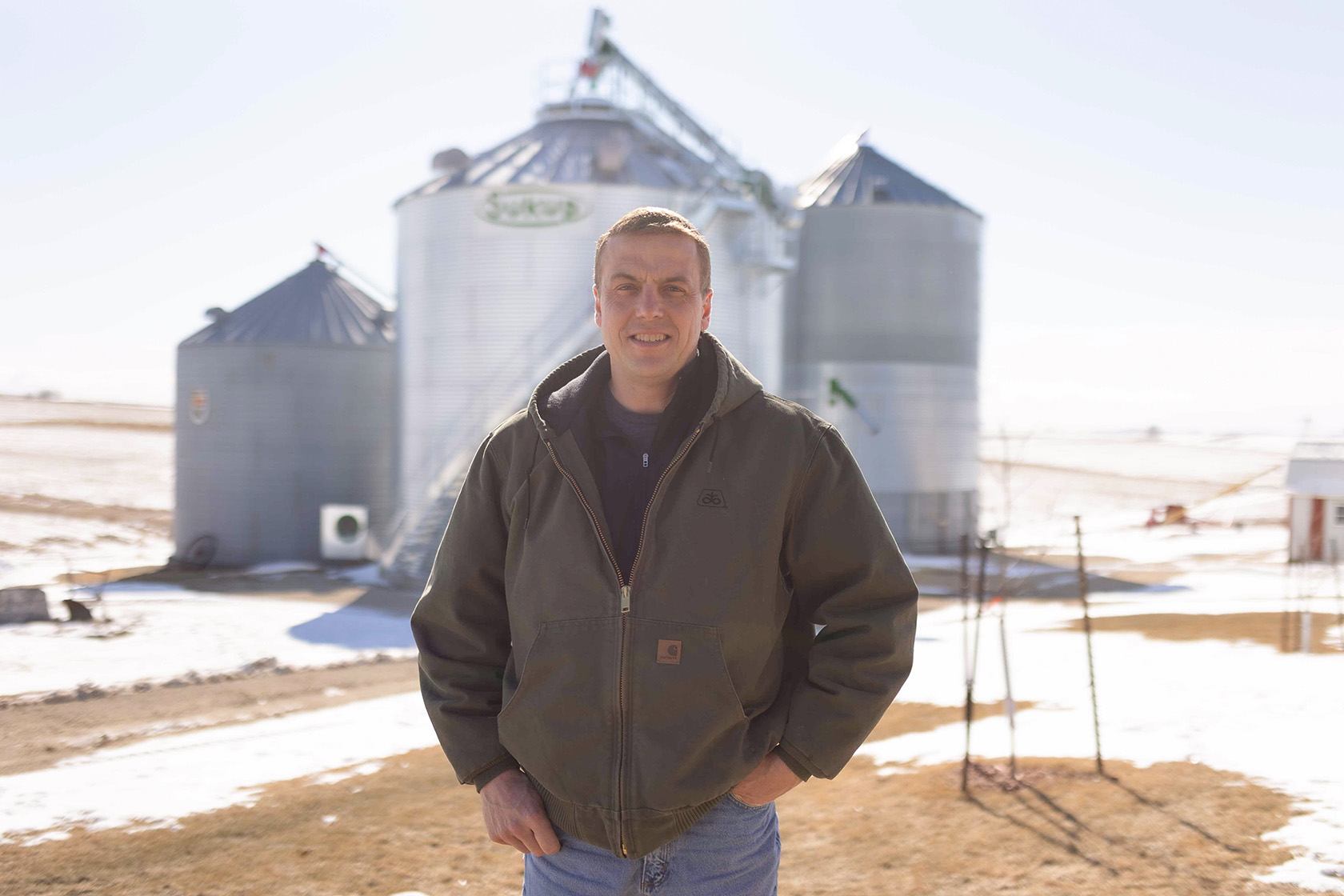
(Photo: Iowa Soybean Association)
A late-emerging soybean could affect your bottom line
April 21, 2022 | Kriss Nelson
Uneven seedling emergence in corn will reduce profitability and yield. Less known, however, are the effects of uneven emergence on soybean yields.
To better understand this relationship, the Iowa Soybean Association’s (ISA) Research Center for Farming Innovation (RCFI) teamed up with northeast Iowa farmer and agronomist Troy Deutmeyer.
Deutmeyer’s research included three locations in Iowa. He marked the soybean plants according to their day of emergence and tracked the plant phenology throughout the season.
“We want those soybean plants to emerge within two to at most three days of each other,” Deutmeyer says.
“After this time, we see significant yield loss from plant to plant on the late emergers.”
Studies show that late-emerging soybean plants produce 20% fewer pods and have more than 30% fewer three bean pods.
Scott Nelson, ISA senior field services program manager, says the study cannot answer the question of how delayed emergence affects final yield.
“Early-emerging soybean plants may or may not grow more branches when next to late-emerging plants, for example,” he says. “What is clear, is uneven emergence in soybeans reduces top-end yield as each plant does not contribute equally to yield.”
Georgia farmer Randy Dowdy set the world record for soybean yield in 2019 at 190 bushels an acre.
“Emergence is something Randy stresses in his soybean production,” Nelson says.
Achieving uniform emergence
Soybean producers should look at achieving uniform plant emergence in the same way they work to attain uniform emergence in corn.
The first step is at harvest. “It all starts with the combine path in the fall, making sure we have uniform residue distribution,” says Deutmeyer.
Uniform residue distribution will allow consistent temperatures and moisture throughout the seed trench.
An area with little to no residue will dry out and warm up quicker versus an area with a large amount of residue.
“It can be four to five degrees cooler just a few inches down the row,” Deutmeyer says. “Residue distribution is extremely critical, and it starts with the combine pass in the fall.”
Deutmeyer says ensuring the residue is evenly distributed after each tillage pass for those with tillage systems is important.

Planting
Uniform seeding depth and seed-to-soil contact are integral to achieving even soybean plant emergence.
“As we go up and down through the soil profile, there are obviously differences in moisture and temperature, and these factors affect the speed of germination,” says Deutmeyer. “Uniform seed-to-soil contact will help ensure every seed is imbibing water at the same rate, which will trigger the germination process.”
One of the first steps to achieving uniform seed-to-soil contact is seed placement, says Anthony Martin, ISA senior field services program manager. The seed depth will vary, depending on the farmer’s system.
“Conventional tillage would likely hint at a slightly deeper placement than no-till or cover crops,” says Martin. “The important piece is getting the seed trench closed properly and making sure there is adequate moisture at the planting depth.”
Planter residue managers will also help with seed-to-soil contact dispersing residue out of the seed trench.
Martin advises not to rely solely on the planter’s monitor.
“Get out of the tractor frequently, and check the planting depth. Make sure everything is set correctly so what your monitor is saying is what is actually happening behind the planter.”
Seed treatments
Deutmeyer says seed treatments allow more vigor and less variability when establishing a uniform soybean seed stand.
RCFI has conducted seed treatment studies. The results are available by utilizing the ISOFAST tool or reviewing individual field trial reports on ISA’s website.
Martin says ILeVO® showed the most significant yield advantage, whereas about half of the other seed treatments showed a significant, positive yield response.
Checking for uniformity
Deutmeyer recommends producers try a flag test, taking 5 feet of a row, visiting every 12 to 24 hours and evaluating each plant as it emerges.
“Uniform emergence can take someone from that good crop to an excellent crop quite quickly,” he says.
Continued studies
Deutmeyer and his Wisconsin counterparts plan to continue with the trial.
“It’s been interesting to see the data from my colleagues in southwest Wisconsin along with our northeast Iowa data showing consistent year-over-year results on the impact of uneven emergence on a plant-to-plant soybean yield,” says Deutmeyer. “It’s an incredibly strong trend to support the hypothesis.”
Martin says the RCFI agronomy team is available to assist farmers interested in starting their own on-farm plant emergence trials. For more information, contact Martin at amartin@ iasoybeans.com or Nelson at snelson@iasoybeans.com.
Back